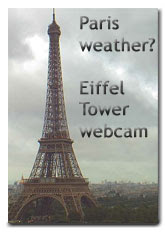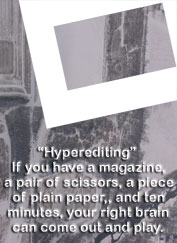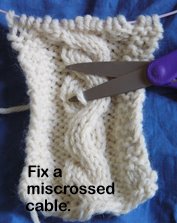.
I'm sorry that Epigenetics is over. After listening to someone tell you cool stuff, practically every day, for weeks and weeks, it can be a letdown when class is over and your nice prof isn't talking to you any more.
It was a really interesting class, and I learned all sorts of things I never imagined. It was a hard class (especially as my working knowledge of basic genetics is not what it could be), but I found it fascinating.
I loved learning about a cutting-edge subject.
I think about the elementary physics class I started (which I'm signed up for again, starting next month). Millions and millions and MILLIONS of people know WAY more about physics than I know (or than I would know had I completed the class!). But epigenetics? Certainly there are a LOT of people who know WAY more than I know about epigenetics. But compared with the number who know more than I know about physics? It's a much smaller number. I think it's fun to be the only person in most places I go who knows anything about epigenetics....
I drew this cluster of genes because I wanted an image of what is going on here, and I couldn't find one that was ok to copy. (Note that I found many images of this cluster online, as well as the ones she showed us in class. My version is not a direct re-drawing of any image I've seen before....)
I have a few tweaks to make to it -- it is Igf2, not lgf2. A different choice of font would be a good idea, at least for the names of the genes, in order to make clear it's capital-I,not lower-case-l.....
(Digression -- good old Courier! End of Digression.)
This cluster of genes is an instance of a case where the maternal version
of the cluster is typically quite different, epigenetically, from the paternal version. The genes are the same, but the expression of those genes is different.
(Digression -- did you know that Australians may say "different to" rather than "different from"? I didn't, before this class.... End of Digression.)
(Digression -- something that is methylated is usually silenced or not expressed. End of Digression.)
The enhancers downstream (to the right, in this image) of the cluster want to reach Igf2 and enhance its expression, but when CTCF is bound to the imprint control region (as is typical for the maternal version of the cluster), the enhancers are blocked, so they enhance H19 instead. Methylation of the imprint control region (typical of the paternal version of the cluster) prevents CTCF from binding, and Igf2 is expressed. (Note that when the imprint control region is methylated, methylation often spreads to H19, and it, too, is methylated.)
If something goes wrong and a person ends up with two paternal versions
of the Igf2/H19 cluster, twice as much Igf2 is made as should be made. Beckwith-Wiedemann syndrome results, and a childhood kidney tumor
(Wilm's tumor) is not uncommon. (Igf2 is a growth promoter, and "too much growth promoter" is one of the hallmarks of cancer.....)
Dr. Marnie Blewitt, who taught Epigenetics, really did a good job. I give her 75% of the credit for me knowing what I know about the subject, and the rest is me, working at understanding all of the material. Any errors I make in discussing this are mine, of course.
I've never tried to make an image available on Wikimedia commons, but since there is no image of the Igf2/H19 cluster there (at least, when I searched, I couldn't find one), I may see what it takes to add an image..... After tweaks, of course.
.
Sunday, July 20, 2014
Subscribe to:
Post Comments (Atom)


















No comments:
Post a Comment